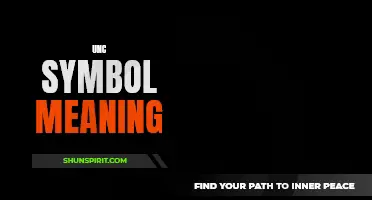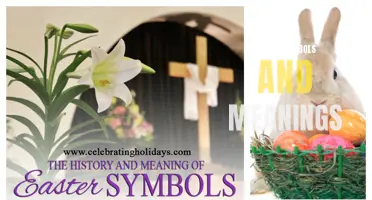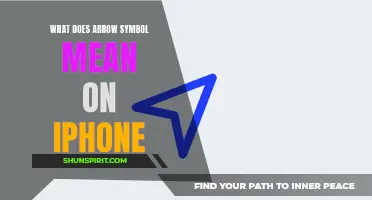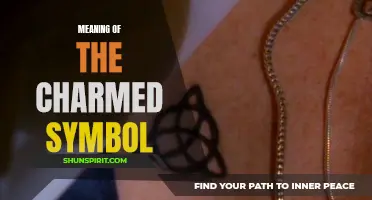
Love is a force that knows no boundaries. It is a profound and complex emotion that has captivated the hearts of humans since time immemorial. It is a potion that can heal the deepest wounds and ignite the brightest flames. In the vast tapestry of love, the symbol of love plays a crucial role, representing the essence and power of this extraordinary force. The love symbol is not just a mere combination of shapes or lines; it is a visual representation of the intangible and all-encompassing nature of love. As we delve into the meaning of the love symbol, we begin to unravel the secrets held within its elegant design and understand the profound significance it holds in our lives.
What You'll Learn
- What is the meaning of the love symbol, and how has it evolved over time?
- How does the love symbol differ across cultures and religions?
- Are there any variations or alternative symbols that represent love in different ways?
- What are some common misconceptions or misinterpretations of the love symbol?
- How does the meaning of the love symbol influence its use in art, literature, and popular culture?

What is the meaning of the love symbol, and how has it evolved over time?
Love symbol is a universal expression of affection and deep emotions shared between individuals. It can encompass various emotions such as love, care, compassion, and desire. Throughout history, the love symbol has taken on different forms and meanings, representing the diverse ways in which it is perceived and experienced.
One of the most recognized love symbols is the heart shape. The origins of the heart shape as a symbol of love can be traced back to ancient times. It is believed to have been inspired by the shape of human organs, particularly the human heart. In ancient civilizations, it was believed that the heart was the center of all emotions, including love. Over time, this association between the heart and love became deeply ingrained in different cultures.
The heart symbol became popularized during the Middle Ages when it was associated with notions of romance and courtly love. It was often depicted in art and literature, representing the love exchanged between noble men and women. During this period, the heart shape began to resemble the iconic symbol we recognize today.
In more recent history, the love symbol has evolved beyond the heart shape to incorporate other elements and representations of love. This evolution has been influenced by cultural shifts, technological advancements, and changing societal norms. Today, the love symbol can be found in various forms such as emojis, digital stickers, and social media icons.
Additionally, the meaning of the love symbol has expanded to include different types of love and relationships. It no longer solely represents romantic love between partners but can also symbolize familial love, friendship, and even self-love. This shift in meaning reflects society's growing recognition and acceptance of diverse forms of love and relationships.
The love symbol has also become a powerful tool for activism and social movements. It has been incorporated into various campaigns promoting equality, LGBTQ+ rights, and acceptance. By leveraging the universal appeal of the love symbol, these movements have been able to raise awareness, foster empathy, and advocate for love in all its many forms.
Furthermore, the digital age has transformed the way we express and communicate love. With the rise of social media and messaging platforms, the love symbol has become a shorthand for expressing affection and endearment. Emojis, such as the red heart or the smiling face with hearts, have become widely used to signify love and positive emotions in digital conversations. These symbols have become an integral part of our online language, enabling us to convey emotions and connect with others in a quick and accessible way.
In conclusion, the love symbol has evolved over time, taking on different forms and meanings. It has expanded beyond the heart shape to encompass various expressions of love, including romantic, familial, and friendship love. The love symbol has become a powerful tool for communication, activism, and expressing emotions in the digital age. Regardless of its form, the love symbol continues to be a universal language that transcends cultural boundaries and speaks to the inherent human need for connection and affection.
Unlock the Secrets of Chinese Good Luck Symbols and Their Meanings
You may want to see also

How does the love symbol differ across cultures and religions?
Love is a universal emotion that is experienced and expressed differently across various cultures and religions. Although the feeling of love is universal, the symbols associated with love can vary greatly depending on cultural and religious beliefs.
In Western cultures, the most popular symbol for love is the heart. The heart shape is often used to symbolize love, affection, and romance. This symbol first gained popularity in the Middle Ages and has since become widely recognized as a symbol of love in Western society. The heart symbol is often seen in cards, advertisements, and other visual representations of love.
In Eastern cultures, the symbol for love may differ. In Chinese culture, for example, the symbol for love is often represented as two people standing side by side. This symbol represents the idea of love and partnership between two individuals. In Japan, the symbol for love is typically depicted as a stylized heart shape similar to that used in Western cultures.
Religious symbols associated with love also vary across different faiths. In Christianity, for example, the crucifix is often seen as a symbol of love. It represents the selfless love and sacrifice of Jesus Christ for humanity. The cross is also associated with love and forgiveness in Christianity.
In Hinduism, the symbol of love is often represented by Radha and Krishna, who are considered divine lovers. Their love story is celebrated, and they are seen as the epitome of love and devotion. Similarly, in Islam, the symbol of love is represented by the love between Allah and his creation. Love and submission to Allah are central themes in Islam.
Different cultures and religions also have unique rituals and traditions associated with expressing love. For example, in Western cultures, the exchange of engagement rings or wedding bands is a common symbol of love and commitment. In Hindu weddings, the tying of the mangalsutra (a sacred necklace) around the bride's neck symbolizes her love and commitment to her husband.
In conclusion, the symbol of love varies across different cultures and religions. While the heart shape is widely recognized as a symbol of love in Western cultures, other symbols such as two individuals standing side by side or religious symbols like the crucifix or Radha and Krishna may represent love in other cultures and religions. These symbols, along with unique rituals and traditions, reflect the diverse ways in which love is expressed and experienced around the world.
How Symbols and Archetypes Gain Meaning Through the Use of Narrative and Context
You may want to see also

Are there any variations or alternative symbols that represent love in different ways?
When it comes to representing love, the most common symbol that comes to mind is the heart shape. However, there are actually several variations and alternative symbols that represent love in different ways. These symbols can vary across different cultures, art movements, and even personal preferences. Here are a few examples of the various symbols of love:
The Heart Symbol:
The heart symbol is undoubtedly the most recognized symbol of love. It generally represents love, affection, and compassion. The heart symbol can be found in various forms, such as the traditional red heart shape or more intricate and stylized designs. It is often used in art, jewelry, greetings cards, and other merchandise symbolizing love and affection.
The Love Knot:
Love knots are symbols that depict two intertwined or interlaced loops or knots. They have been used for centuries to symbolize the unbreakable bond of love between two individuals. Love knots can be found in different cultures and are often associated with marriage or unity. The Celtic love knot, for example, is a popular variation that represents eternal love and loyalty.
The Dove:
The dove is commonly associated with love and peace. In many cultures and religions, the dove is seen as a symbol of love, purity, and fidelity. Doves are known for their gentle nature and their ability to mate for life, which further strengthens the connection between doves and love. It is often used in weddings and romantic imagery to represent love, harmony, and new beginnings.
The Rose:
The rose has long been considered a symbol of love and beauty. Different colors of roses can convey different meanings, but red roses are particularly associated with romantic love. The rose is often given as a gift to express love and admiration. It has been a recurring motif in art, literature, and poetry for centuries, symbolizing passion, desire, and affection.
The Infinity Symbol:
The infinity symbol, which looks like a figure-eight or a sideways number '∞', is another popular symbol that represents eternal love and infinite connection. It signifies the idea that love has no limits or boundaries, and it is often used to represent strong and everlasting relationships.
The Yin and Yang:
The Yin and Yang symbol originates from Chinese philosophy and represents the harmony and balance between two opposing forces. The Yin, the dark side, and the Yang, the light side, blend together to create a whole. In the context of love, it symbolizes the unity and complementary nature of two individuals coming together in a loving relationship.
The Claddagh:
The Claddagh is a traditional Irish symbol that represents love, friendship, and loyalty. It consists of a heart (representing love) held by two hands (representing friendship) and topped with a crown (representing loyalty). The Claddagh ring, often worn as a gift or as a wedding ring, holds significance in Irish culture and is passed down through generations as a symbol of enduring love and friendship.
These are just a few of the many variations and alternative symbols that represent love in different ways. Each symbol has its own unique connotations and cultural significance, making them suitable for different expressions of love and affection. Whether it's the heart shape, love knots, doves, roses, infinity symbols, yin and yang, or the Claddagh, the diverse symbols of love allow individuals to express their feelings and emotions in a meaningful and personal way.
The Fascinating Meaning Behind the Greek Eye Symbol: A Powerful Protection Amulet
You may want to see also

What are some common misconceptions or misinterpretations of the love symbol?
The love symbol is one of the most recognizable symbols in the world. It is commonly used to represent love, affection, and romance. However, like many symbols, it can be misinterpreted or misunderstood. In this article, we will explore some common misconceptions or misinterpretations of the love symbol.
One common misinterpretation of the love symbol is that it only represents romantic love. While the symbol is indeed often associated with romantic love, it can also represent love in a more general sense. Love for family, friends, pets, or even oneself can all be represented by the love symbol. It is important to remember that love comes in many different forms and can be expressed in various ways.
Another misconception is that the love symbol is only used by heterosexual couples. This is not true at all. The love symbol is inclusive and can be used by people of all genders and sexual orientations. Love knows no boundaries, and the symbol should reflect that. It is important to recognize and celebrate love in all its forms.
Some people may also mistakenly believe that the love symbol is a recent invention or a commercialized symbol. In reality, the love symbol has been around for centuries and has deep roots in various cultures and religions. The symbol can be traced back to ancient times and has been used in different contexts throughout history. It is not just a symbol created by corporations or marketers.
Additionally, some people may believe that the love symbol is limited to certain cultures or religions. However, the love symbol is truly universal and transcends cultural and religious boundaries. It is a symbol that is recognized and understood by people all over the world, regardless of their background or beliefs. It is a symbol that speaks to the basic, innate human emotion of love.
Lastly, there may be a misconception that the love symbol is only meant for public displays of affection or grand gestures. While the symbol can certainly be used in those contexts, it can also be utilized in more subtle and personal ways. A small love symbol tattoo, a piece of jewelry, or even a handwritten note can all be meaningful expressions of love. The symbol is versatile and can adapt to different situations or preferences.
In conclusion, the love symbol is a powerful and meaningful symbol that represents love in all its forms. It is important to avoid misconceptions or misinterpretations of the symbol and to recognize its universality and inclusivity. Love is a fundamental human emotion, and the love symbol helps us express and celebrate that emotion. Whether it is used in a romantic or non-romantic context, the love symbol serves as a reminder of the beauty and power of love.
Decoding Car Air Conditioning Symbols: Understanding the Meaning Behind the Icons
You may want to see also

How does the meaning of the love symbol influence its use in art, literature, and popular culture?
The love symbol is one of the most widely recognized symbols in art, literature, and popular culture. It holds a powerful meaning that transcends cultural and language barriers. The symbol's universal language of love has influenced its use in various art forms, literature, and popular culture. This article explores how the meaning of the love symbol has influenced its use in these different realms.
In art, the love symbol is often depicted in various forms such as hearts, Cupid, or the word "love" itself. Artists use these symbols to evoke the emotion of love and to convey messages of affection and adoration. The symbol's inherent meaning allows artists to connect with their audiences on a deep emotional level. Whether it is a painting, a sculpture, or a piece of graffiti art, the love symbol adds a layer of complexity and depth to the artwork, making it more relatable and engaging.
Literature is another realm where the love symbol finds extensive use. Love stories have been an integral part of literature since ancient times, and the love symbol plays a pivotal role in these narratives. From Shakespeare's classic tragedies to modern-day romance novels, the love symbol helps convey the themes of romance, passion, and longing. It serves as a visual representation of the love between characters and adds an emotional element to the storytelling process. The love symbol also allows readers to connect with the characters on a deeper level, making the story more memorable and impactful.
In popular culture, the love symbol has become an iconic emblem. It is often used in various forms of media, such as movies, television shows, and music. Many popular songs are dedicated to the theme of love, and the love symbol serves as a visual representation of the emotions expressed in these songs. Additionally, the love symbol is often used in marketing and advertising as a way to evoke positive emotions and to appeal to consumers' desires for love and connection. Brands and companies leverage the universal meaning of the love symbol to create a sense of trust and emotional resonance with their target audience.
The meaning of the love symbol goes beyond its visual representation. It represents a deep, universal emotion that is felt by people across cultures and generations. Its use in art, literature, and popular culture allows creators to tap into this shared emotional experience and connect with their audiences in a profound way. The love symbol serves as a reminder of the power of love and its ability to transcend boundaries, making it a timeless and cherished symbol in our society.
Frequently asked questions
The heart symbolizes love, affection, and emotion. It is often used to represent deep feelings and is widely recognized as a symbol of love and romance.
The heart has long been associated with love due to its connection to emotions and feelings. In ancient times, the heart was believed to be the center of all emotions and thoughts, including love. This association has carried through history and has become ingrained in our cultural understanding of love.
The origin of the heart symbol in relation to love can be traced back to ancient civilizations, such as the ancient Egyptians and Greeks. These cultures believed that the heart was the center of human emotions, including love. Over time, the symbol of the heart became widely recognized and accepted as a symbol of love.
In modern times, the heart symbol is often used to represent love in various forms. It is commonly used in cards, gifts, and jewelry as a symbol of romantic love. Additionally, the heart symbol is frequently used in social media and digital communication to express love and affection. Its universal recognition and association with love make it a popular choice for expressing feelings of love in today's society.







